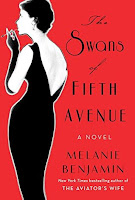You Know What They Say About Assumptions...
School Librarianship in 2015
“I
wish I could just sit and read all day!”
“How
is this hard? You just check in and out books.”
“Can
you make these copies for me/fetch me some white-out/do some other menial,
secretarial task that isn’t in your job description?”
Overwhelmingly, in my sixth year as a school librarian
(and eleventh year in education), I have found that most teachers, staff,
students, and community members have no idea what being a librarian truly
entails. They just know if they like you, if you can find them a good book, and
how to procure such an “easy job” for themselves. While many other librarian
colleagues say, “It’s up to you to educate them!” the reality of actually doing
that is different. If you say, “I have a Master’s degree,” it can come off as
braggy; if you share a wonderful autobiography on your website, no one will
read it. Most teachers have no idea that in order to become a school librarian,
you have to spend a minimum of three years as a classroom teacher—but telling
them, “You know, I had to endure the torture of 180 students myself” comes off
as stilted and, again, braggy.
So how can we advocate for ourselves? I have found the
best success comes from doing, not
telling. I can tell a teacher that I am a certified and experienced teacher
myself, but I would rather show them by inviting their class into the library
and teaching a brilliant lesson with aplomb. All it takes is a few teachers to
get on board, and then the whispers will start circulating around the school:
“Man, that librarian knows her stuff. And she’ll teach your class for you! And
even grade the papers!”
This recently happened, as a matter of fact—a teacher
came to me asking for ideas to kickstart her upcoming poetry unit. When I
taught English, poetry was absolutely my favorite unit, so I jumped at the
chance. I put together an interesting intro and lesson, purchased bags of candy
to use as bribes (hey, these aren’t my actual students, so I need to make sure
they take me seriously!), and proceeded to get to do something I have been
wanting to do for years—spine poetry! It was a hit, and other requests soon
came pouring in.
While sometimes I do wish all I did was sit around and
read all day (which never, ever, ever happens), the fact is that the job
description of a librarian changes with the times. We are now information
specialists, media connoisseurs, research experts, and digital citizenship
stewards. We bridge the gap between the brittle, arcane pages of Homer and the
promiscuous lure of a Google search. While our actual job description may change,
an indelible fact remains: as long as there is information in this world, there
will be librarians. It’s up to us to gently nudge our colleagues into utilizing
us to our full capacities.
*Just
as an FYI, in my district, to become a librarian one must have a Master’s of
Library (and Information) Science, at least three years as a classroom teacher,
and a passing grade on a media specialist certification exam.






































